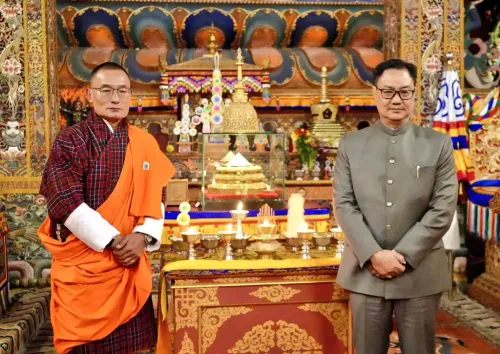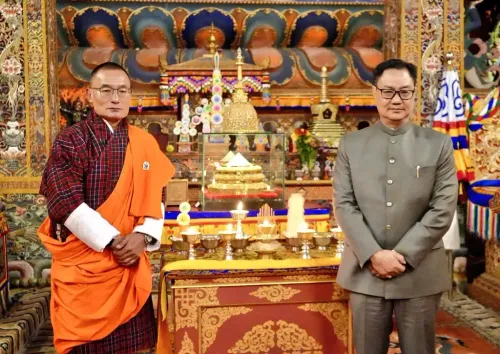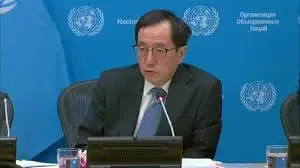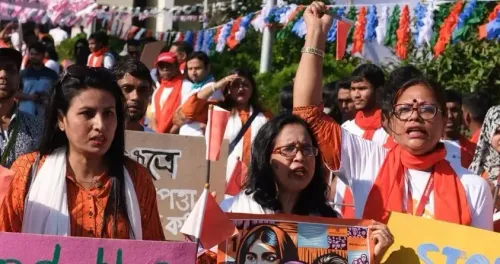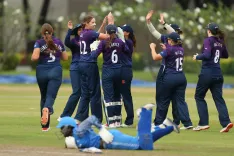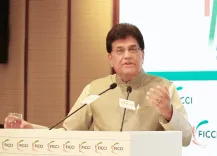Can North Korea's Hope for 'Lasting' Peace Influence Southeast Asia After Thailand-Cambodia Ceasefire?
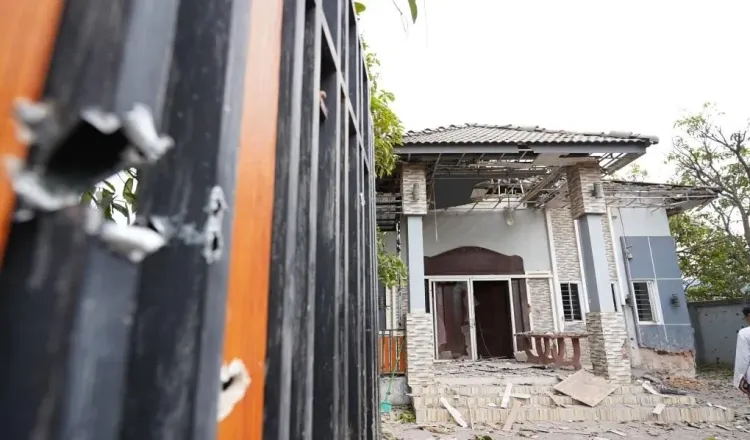
Synopsis
Key Takeaways
- North Korea expresses hope for peace in Southeast Asia.
- The ceasefire between Thailand and Cambodia aims to restore stability.
- At least 35 lives were lost due to recent clashes.
- Malaysian Prime Minister played a key role in facilitating negotiations.
- Direct communication channels have been re-established.
Seoul, Aug 2 (NationPress) On Saturday, North Korea expressed its aspirations for "lasting peace and stability" in Southeast Asia following the ceasefire agreement between Thailand and Cambodia, which was reached this week to put an end to several days of deadly border clashes.
A spokesperson from the North's foreign ministry shared these sentiments in a statement released by the official Korean Central News Agency after the ceasefire took effect at midnight on Monday.
"Our hope is that the nations of Southeast Asia can achieve lasting peace and stability by resolving their differences, enhancing political trust, and fostering bilateral cooperation," the spokesperson remarked.
Reports indicate that at least 35 individuals lost their lives in the violence that erupted on July 24, as reported by the Yonhap news agency.
Prior to this, on July 28, the leaders of Thailand and Cambodia reached an agreement to initiate a ceasefire, as noted by Malaysian Prime Minister Anwar Ibrahim after a special meeting.
The ceasefire talks were held between Cambodian Prime Minister Hun Manet and acting Thai Prime Minister Phumtham Wechayachai, facilitated by Anwar at the Malaysian Prime Minister's residence in Putrajaya.
In a joint press conference post-ceasefire negotiations, Anwar detailed a phased de-escalation process along with the monitoring mechanisms that would be employed.
"Both Cambodia and Thailand have come to a mutual understanding to implement an immediate and unconditional ceasefire effective from July 28, 2025. This marks a crucial first step towards restoring peace and security," he stated.
Furthermore, both parties agreed to re-establish direct communications between their prime ministers, foreign ministers, and defense ministers, Anwar added.
Hun Manet remarked that the successful negotiations would create numerous opportunities for hundreds of thousands of individuals on both sides to return to normalcy, signaling the start of efforts to rebuild trust, confidence, and cooperation between Cambodia and Thailand.
Phumtham emphasized that the outcomes of these talks showcased Thailand's commitment to a peaceful resolution while safeguarding the nation's sovereignty and the well-being of its citizens.
Meanwhile, on July 29, the Thai Army alleged that Cambodia had breached the ceasefire agreement. However, the Thai side is still working to facilitate negotiations between the frontline commanders.
In response, the Cambodian Ministry of National Defence disputed the Thai army's claim, which accused Cambodia of attacking Thailand post-ceasefire.

